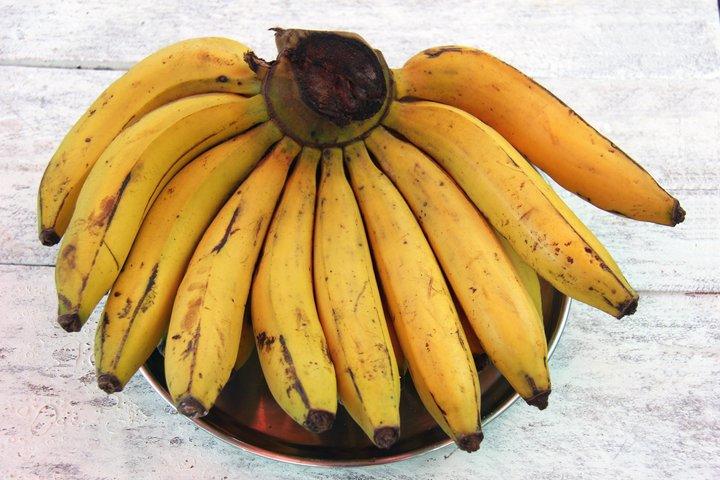Research Articles Bananas and climate change: what is going to happen to one of the world’s favourite fruits?

Bioversity International scientists analyze the impact of climate change on banana cultivation in a new FAO book. Bananas are a key crop for millions of households in developing countries, providing food, nutrition and income.
Grown throughout the tropics and subtropics, bananas are a source of food, nutrition and income for millions of rural and urban households. They are a staple crop in many countries. In Uganda, Rwanda and Burundi, people consume each 3-11 bananas per day, and in Uganda, the local word for bananas – matooke – means food.
The most recent reports on the impact of climate change on agricultural production show that, especially in the tropical regions, yields of certain crops will decline. Projections vary for different crops, but what is going to happen to bananas in a climate scenario of rising temperatures and alteration of rainfall amount and patterns?
A team of researchers from Bioversity International and partners within the framework of the CGIAR Research Program on Climate Change, Agriculture and Food Security took up the challenge to respond to this question. The results of their efforts have been published by the Food and Agriculture Organization of the UN in a new book – Climate change and food systems: global assessments and implications for food security and trade.
“We first analyzed if and how areas suitable for banana production would change based on projected rainfall and temperature in 2030, 2050 and 2070”, says Germán Calberto , who led the study. “Our results show that by 2070 land area suitable for bananas will increase by 50%. Increasing annual temperatures will make conditions more favourable for banana production in the subtropics and in tropical highlands”.
So with higher temperatures bananas could be grown in more areas. “This means that banana production is not threatened, but there are other considerations to take into account”, adds Bioversity International scientist Charles Staver, a co-author of the study. “Higher temperatures mean an increase in water demand, which is projected to increase by 12-15%. And higher temperatures may also threaten those crops, such as coffee, that are often grown with bananas. Farmers who grow banana as a secondary crop, may abandon banana when climate change makes coffee cultivation less viable.”
Another big challenge for banana cultivation with warmer temperatures is the spread of pests and diseases. The scientists reviewed the potential impact of climate change on the incidence and severity of the most important banana leaf disease, black leaf streak. Preliminary results suggest that the increased temperatures will accelerate disease development. However, rainfall distribution has a much larger impact on disease severity. Since rainfall distribution is less affected by climate change, black leaf streak management will continue to be linked more to rainfall than temperature.
“This study is a first step to understand how banana cultivation will change in the next 60 years,” comments Calberto. We know that warmer climates will be accompanied by increased extreme weather events. We need more research to quantify the effects of these events and their implications for banana productivity and management. The genetic diversity of bananas – there are more than 500 varieties around the world – is also a key resource for climate change adaptation that needs to be further studied and used”.
Download the book Climate change and food systems: global assessments and implications for food security and trade
Download the chapter 'An assessment of global banana production and suitability under climate change scenarios'
This work is part of the CGIAR Research Program on Climate Change, Agriculture and Food Security.
Leer este artículo en español
